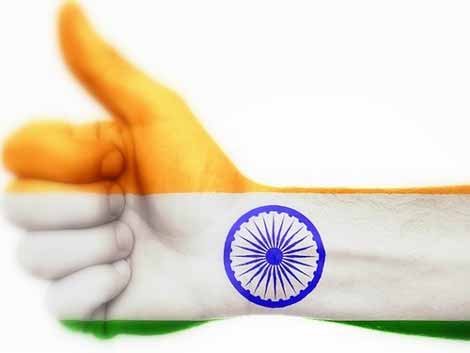Modi Government - Critical Analysis: Part 1 - Basic Amenities for All

Article written by jain and govil - astute political observers
We are starting a multi-part series where, like always, we will review the promises made and published by Modi government as part of their 2014 election manifesto and how has his government lived up to the promises.
In 2014, India ushered in a new era where the citizens of India voted BJP into power. Modi's appeal to aspirational India received an overwhelming response. In last thirty years this is probably the first time that a political party got absolute majority. Mr. Narendar Modi was sworn in as the Prime Minister to march towards the progress. In this series of articles, we will present unbiased analysis of the elections promises and how the Modi government is fairing against the promises.
First let’s look at the election manifesto of 2014. The main slogan was “Ek Bharat – Shreshtha Bharat” translated in English as “One India – Great India”. The diversity and multiplicity of the vast country and the need to carry the whole nation with all its diversity and plurality requires serious commitment to fulfill the underlying commitment of “Sabka Saath Sabka Vikas” (Progress together for all”). A nation where, historically, a majority of the 1.25 billion population were largely neglected in the interest of few, the main pledge itself is enough to take a note of.
A copy of the full manifesto can be downloaded here: http://www.bjp.org/images/pdf_2014/full_manifesto_english_07.04.2014.pdf

In this series of articles, we will take each point in an article and provide a perspective with regards to the progress made. This article deals with “Basic Amenities to All” and “Involved Women”.
It may be unnerving to read that in 2014, the life of many, especially in the rural area, was still the same as that of time when India regained its independence, and only made worse because of growth in population. Worst hit were the women of India where they didn’t have access to basic amenities such as toilets, access to clean water, education, health care facilities, and had to gather wood to cook the food.
Mr. Modi initiated several schemes to address these issues right away after getting elected in 2014. Some of the schemes that he launched to address these issues are captured in the diagram below.

Let's look at each of these initiatives in a greater details.
Swachh Bharat Initiative:

The campaign was launched in 2014 with a target of constructing 100,000,000 (100 million) toilets by 2019 across the nation to completely eliminate open defecation. As of July 2018, 79,500,000 (79.5 million) toilets have been constructed. The access to toilets has gone up from 40% in 2014 to around 90% in 2018. A toilet is constructed at an average rate of 3 days per toilet creating employment of around 700,000,000 man days or about 500,000 people on an annual basis. It is estimated that around 564 million people are benefiting by this initiative.
Saubhagya:
The campaign to have 100% electrification of the villages by 2018 was launched in 2015. It was targeted to have the last remaining 18,452 villages be electrified by 2018. On 28th April 2018, the last of the village was electrified! For a village to be classified as electrified, however, requires that at least 10% household have electricity. So, from household perspective 40 million households needed to be electrified. As of May 2018, around 9 million households have been electrified. The shortfall is largely due to the fact that the reliability of the electric grid needs to be improved upon before all the households are electrified. There are very many initiatives that the government is undertaking currently which will improve the grid reliability and also the electricity generation.
Swajal Yojna:
Swajal Yojna is designed to bring clean drinking water to rural areas. This initiative is largely state driven and various states have launched the schemes at different times. This is also a world bank funded initiative. It is estimated that around 600 million people do not have access to clean drinking water. Water shortage in India is a much larger problem which is worsened by the pollution of the rivers. At the time of writing this article not much information is available to provide a perspective on success of the scheme.
Ujjwala Yojana:
This initiative was launched in May 2017 with a target for providing Liquefied Petroleum Gas (LPG) connections/units to replace the unclean cooking fuel that results in large number of fatalities due to inhalation of the exhaust/fumes. The target was to provide 50,000,000 (50 million) LPG connection to rural and poor citizens impacting about 300 million people. As of December 2018, 58,555,611(over 58 million) LPG connections have been provided along with setting up of close to 2,000 helpline for reporting leakage complaints. Interesting to note that one of the objectives of this initiative was empowering women and protecting their health.

So what do you think of the accomplishment against the promises? In our opinion - Promises Fulfilled
=====
We work hard to research the topic and collect data points to form a narrative. So, if you like the article please: